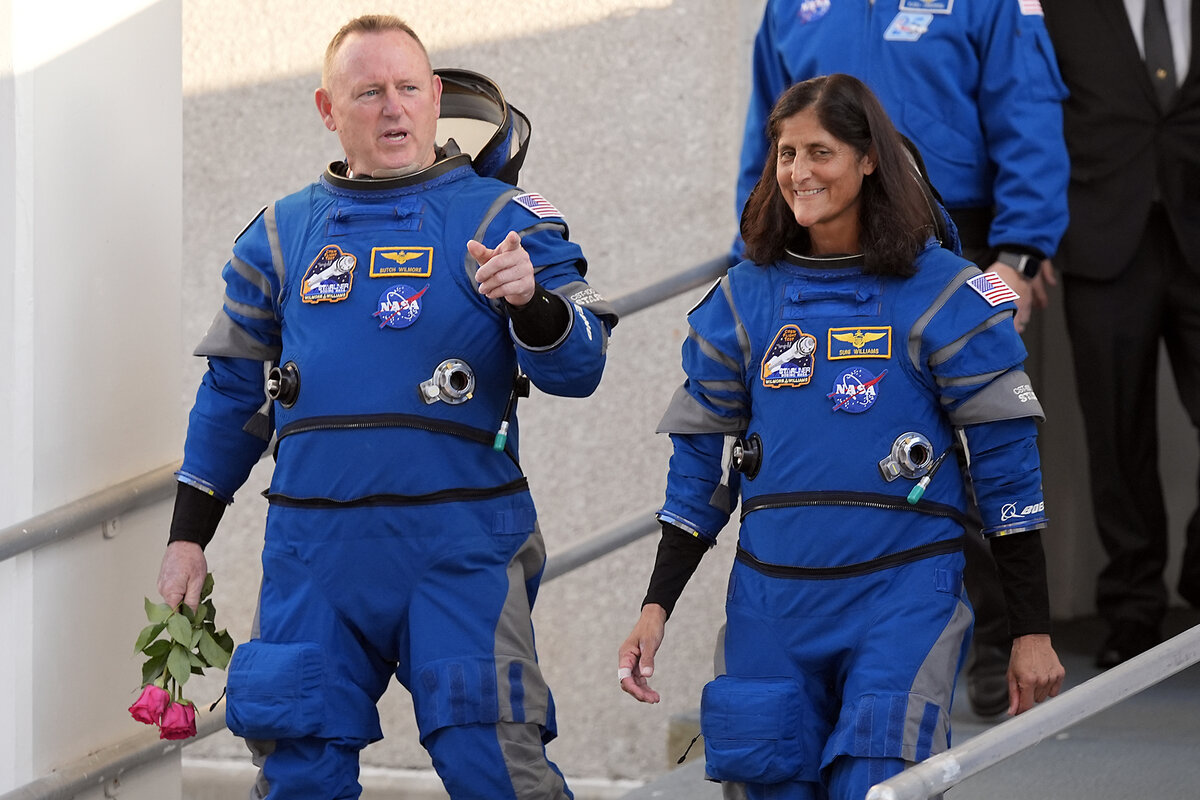Boeing has seen a tide of bad headlines. It’s hoping for a reset with space launch.
Loading...
Boeing’s first spacecraft to carry a human crew is set to launch Saturday from Florida. If all goes as planned, the mission will bring astronauts to the International Space Station and prove to NASA that Boeing can be a reliable transportation partner.
The Starliner capsule is scheduled to take off as soon as 12:25 p.m. EDT on June 1. It’s been a long journey to get to this point: NASA has rescheduled the launch five times this month amid technical concerns. That follows years of delays and costs running $1 billion over budget.
Astronauts Barry “Butch” Wilmore and Sunita Williams are expected to test the spacecraft’s systems while at the space station for about seven days, before landing in the southwestern United States.
A successful launch would be a milestone moment for Boeing and help solidify a new era of commercial space flight. The Starliner is the second of two contracts NASA awarded to private companies to shuttle astronauts to the space station.
Why is this Starliner launch important?
Safely transporting Mr. Wilmore and Ms. Williams is a crucial priority. A successful launch would also provide NASA with a second U.S. spacecraft capable of carrying astronauts to and from the space station.
“It was really important for the nation to have a strategy where we would have multiple companies with the capability to take humans to outer space,” says Kay Sears, vice president and general manager of Boeing Defense, Space & Security.
Starliner also has some distinct capabilities such as allowing astronauts to maneuver the capsule as if they were flying an airplane, Ms. Sears says. “There are certain situations where we really want the astronauts to be able to take control if they need to, so that's a unique feature.”
SpaceX’s Crew Dragon has launched 50 people in 13 flights to the space station since 2020, while Boeing’s endeavor has been fraught with challenges.
Boeing completed a successful test of an uncrewed Starliner mission to the space station in 2022. Once the Starliner completes this crewed flight, NASA intends to use the craft for regular missions carrying four astronauts at a time to the space station.
The Starliner launch aims to lessen NASA’s dependence on Russia for low-orbit spaceflight. Since NASA retired its space shuttle fleet in 2011, it has used Russian shuttles to send American astronauts to the space station, most recently with American Tracy Dyson joining a Belarusian and a Russian cosmonaut in a March 2024 launch. Although the U.S. and Russia currently cooperate when it comes to spaceflight, the tense political situation between the two powers has upped the urgency of ending America’s reliance on the Russian space program.
Having two reliable spacecraft to alternate between would allow the U.S. to maintain a consistent human presence on the space station, which has been operated by NASA and its international partners since 1998.
“You can’t lead and you can’t shape the rules if you don’t show up. So human spaceflight is about showing up in a region that we’re already really dependent on – but we don’t control. And so we want to shape the rules of that environment,” says Scott Pace, director of the Space Policy Institute at George Washington University.
How does it fit into NASA’s overall plans?
NASA has been focusing on its Commercial Crew Program since retiring its space shuttle fleet in 2011. Its goal is to develop safe and cost-effective human transportation to the space station through partnerships with private companies. NASA hopes to let these companies run shuttle missions while it concentrates on deep-space endeavors.
“The real question is, what comes after the space station?” says Mr. Pace. He points out that there have been a number of proposals for building small commercial space stations in low Earth orbit that could assist with technology development or space tourism.
NASA plans to retire the space station in 2030 by crashing it into the ocean. What an international space station might look like in the future is unclear, with three companies – Axiom Space, Voyager Space, and Blue Origin – vying to win a NASA partnership.
“I think it is a natural advancement of our space program. It saves the taxpayers a lot of dollars because these companies have the incentive to innovate and lower costs so they can bring in additional customers,” says Lori Garver, a former NASA deputy administrator and a senior fellow at Harvard University's Belfer Center.
Why is this a big test for Boeing in particular?
Boeing could use a public relations win right now after a string of negative news about its commercial aviation business. Boeing is facing intense public scrutiny after several issues with its 737 jets, including a panel blowing off a January Alaska Airlines flight shortly after takeoff.
Landing the Starliner capsule safely back on Earth would be the successful completion of a multibillion-dollar and yearslong project. The first two private contracts were awarded to Boeing and SpaceX in 2014, for $4.2 billion and $2.6 billion, respectively.
SpaceX experienced a handful of failures prior to its successful crewed launch, and it also dealt with yearslong delays and budget overruns. Most recently, the Starliner launch was grounded May 6 about two hours before takeoff due to a malfunctioning valve on the Atlas V rocket that carries the capsule to space. A second launch attempt scheduled for May 17 was called off when a small helium leak was found in the Starliner propulsion system.
Boeing and NASA will learn from this test flight, says Ms. Sears, who notes a successful launch would “build trust with our customers and our employees.”
Finding problems before launching is part of being diligent, says Mr. Pace. “No one likes the delays, but it’s simply a part of the process of doing it right,” says Mr. Pace. He notes the cost of running Boeing’s space program may ultimately prove more important to the company than the delays.
“There is certainly a question as to whether they will continue the program after they fulfill their commitments to NASA because it has been a big, expensive hit to the company,” he says. “I think they can overcome reputational issues. I think they can overcome and solve their technical problems, but you know, finances are finances.”







